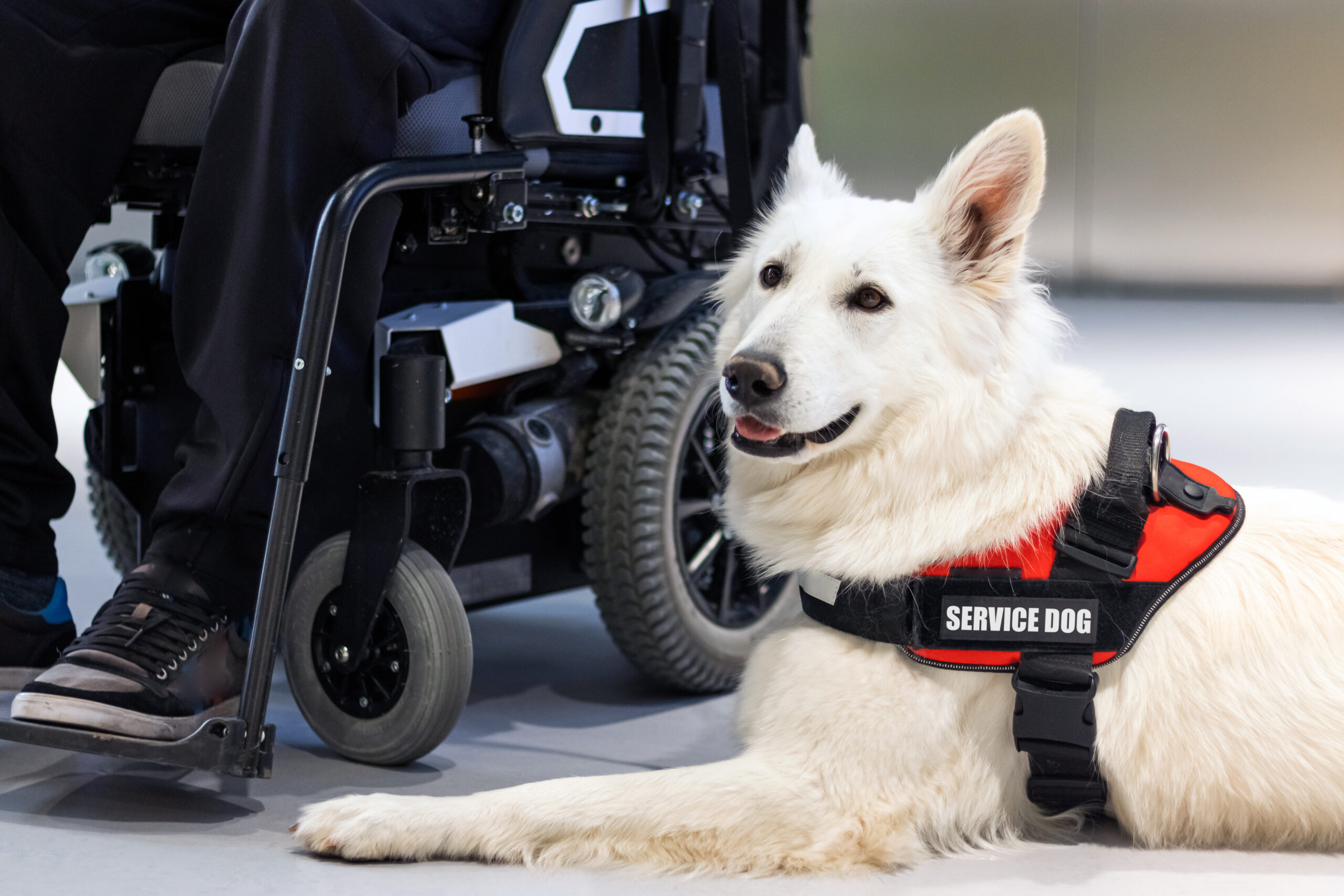Dogs improve our lives with a documented increase in both happiness and fitness with a decrease in levels of stress. We all love our furry friends but there’s a lot more that dogs do to help us than many people realize. Emotional Support Dogs and Service Dogs offer important support for people with disorders and disabilities, helping them to better function and get through some of life’s challenges.
What are Service Dogs?
Service dogs are trained to perform specific tasks for people with physical or mental disability. Service dogs are highly trained and paired with handlers with disabilities who will rely on these animals to help them get through daily life. Service dogs perform a wide range of tasks and can be trained to assist people with various disabilities and under the Americans with Disabilities Act are not considered pets but rather are working dogs. These dogs are legally allowed to accompany their handlers into any public space or building even if that area has a no pets policy and face no restrictions when flying in the cabin of an aircraft with their handlers.
What Kinds of Work do Service Dogs Perform?
Hearing or signal dogs have been trained to assist deaf or hard of hearing people. For example, when the doorbell rings or a fire alarm goes off these dogs are equipped with specific signals to alert their handlers. Psychiatric service dogs are trained to help lessen the effects of various psychiatric events. These dogs are trained to remind their handlers to take medication or help to keep a disoriented person out of danger. There are specific seizure response dogs that are trained to help keep someone with a seizure disorder out of harm’s way or to go for help when needed. One of the more highly trained types of service animals are medical alert dogs who are trained to predict when a person is about to have a seizure, and can alert them to sit or lie down preventing a potentially dangerous fall.
Service Dog Training
Regardless of where a service dog is trained, the training is inherently extensive. The training of a service dog begins with the basics of doing house training, socialization and a lot of practice for ignoring distractions. After the fundamentals have been learned the dog gets trained in the specific tasks that it will perform for its handler. There are a variety of service dog breeds and many type of tasks for these dogs to be performing. The most common breeds of service dogs are Labradors, Golden Retrievers and German Shepherds.
What are Emotional Support Dogs?
Emotional support animals enhance emotional and mental well-being with their mere presence, no special training required. Emotional support animals are not service animals. While they can help with treatment plans to alleviate certain conditions or illnesses, they do not have special training nor the rights and privileges that go along with being a dedicated service animal under the Americans with Disabilities Act. These emotional support animals provide therapeutic contact for humans and can help alleviate disorders that include depression, anxiety, learning disabilities, phobias, loneliness and PTSD among other things. In general ESAs are not allowed in public spaces or where pets are not allowed.
How Dogs Become Emotional Support Animals
In order for your pet to become an ESA you will need an official letter from a licensed healthcare professional stating that you have a disability that will be helped by the ESA. Any dog can be an ESA but it is important to make sure that your dog has the right temperament to help you with your specific needs. A strong bond between you and your dog will help them be much more effective in helping you.
Dog Training is vital for all dogs including ESAs.
Although Emotional Support Animals are a special category, all dogs enhance our emotional wellbeing and do so most effectively when well behaved. Pets come with responsibilities and that can add stress but well-behaved dog have a way of dissipating our total stress levels. At My Dog Listens we have trained many emotional support dogs and therapy dogs in training and we enjoy seeing that our dog training results in happy dogs and happy dog owners.








